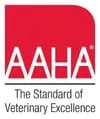A blood glucose or curve is a graph of blood glucose levels over time. It is the most effective way to determine the type, dose, and frequency of administration of insulin, necessary to keep the blood glucose at acceptable levels. Each dog responds very differently to insulin, and so the appropriate insulin therapy must be determined for each individual dog. In addition, a dog's insulin needs may change dramatically over time, so blood glucose curves may need to be performed periodically for the lifetime of the dog.
Blood glucose curves are necessary because each dog reacts differently to the types of insulin, dosage, and intervals at which insulin is given. By performing a blood glucose curve, we can determine if an insulin dose was effective, when the peak effect occurred (i.e., when the glucose level was at its lowest level, how long the effect lasted, and the degree of fluctuation in the glucose level. Changes can then be made in the type of insulin, the dosage, or the dosing intervals in order to maintain the blood glucose at the optimal level throughout a 24-hour period. In some cases, up to five or more blood glucose curves may need to be performed before a satisfactory regimen is determined. In addition to the blood glucose curve, the response of the dog is noted. The amount the dog is eating, drinking, and urinating; activity level; and weight all help determine if the insulin regimen is effective.
How is a blood glucose curve performed?
To perform a blood glucose curve, you will need to feed your dog first and then administer the correct dose of insulin. The pet is required to stay for the day at the clinic at which time the blood samples are taken at regular intervals throughout the day to monitor the blood glucose level. It is recommended that a dog be on that specified insulin dose for 4-7 days before the glucose curve is performed to give the dog's body time to equilibrate.
We now have a more accurate monitor that in many cases can be applied to the patients skin and allow them to go home with the sensor. This results in much less stress and fewer blood draws. This also gives us a truer representation of what their glucose is doing at home in their normal daily routine.
Diet and exercise greatly affect the dog's need for insulin. During the regulation process, it is important to feed the dog the same food, in the same amounts, at the same time, that it will be fed at home. The dog's activity level should also mirror what she will be doing at home. The timing of the administration of insulin should also be consistent with when the owner will be able to give the insulin at home.
How is the blood glucose measured?
The glucose level in the blood is determined through laboratory testing. This will occur in your veterinarian's office. Since many blood samples must be taken, we will use a hand-held glucometer. To use this device, several drops of the blood sample are placed on a chemically-impregnated paper strip. A chemical reaction occurs that changes the color of the strip depending upon the amount of glucose present. The wavelength of the color is read by placing the strip in the glucometer.
Why can't we just measure the amount of glucose in the urine?
Glucose will appear in the urine of dogs if the blood glucose level exceeds 180-220 mm/dL. The normal blood glucose level is 60-110mg/dl. A determination of blood glucose tells us what the blood glucose level is at that particular time. A urine glucose test does not tell us what is going on at the time the urine sample was obtained; it is an average of the glucose level in the urine which was formed since the dog last urinated - that could be 8 or more hours ago. Insulin dosages should NOT be changed based solely on urine glucose levels.


